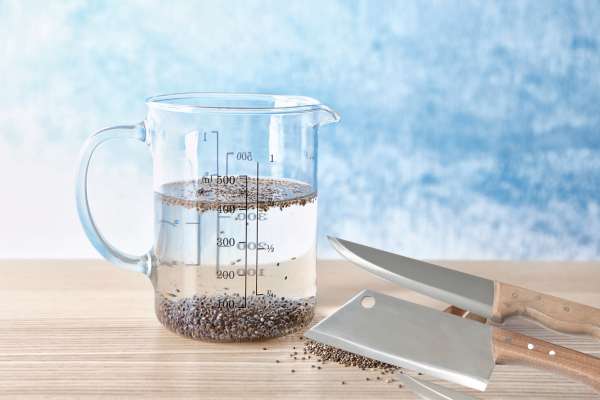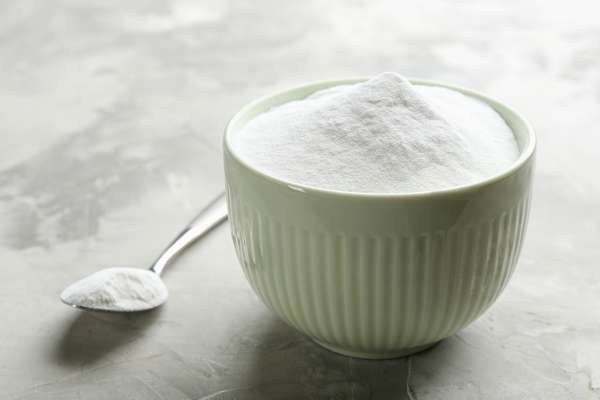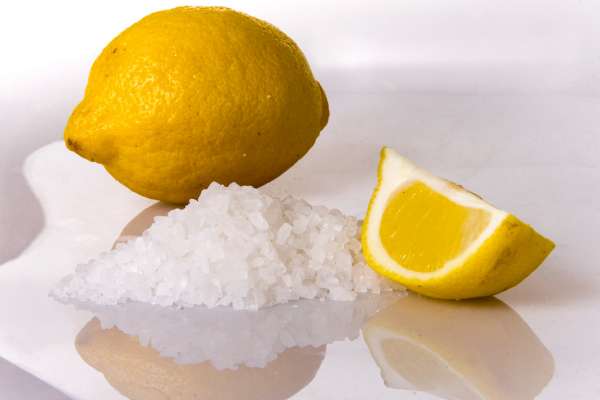Removing rust from kitchen knives is an essential skill for maintaining the quality and longevity of your cutlery. Rust can not only tarnish the appearance of your knives but also affect their performance and, ultimately, the safety of your food preparation. This guide provides a straightforward approach to eliminating rusted, ensuring your knives remain in top condition. By following our simple yet effective tips, you can restore your kitchen knives to their former glory, keeping them sharp, safe, and ready for any culinary challenge.
Why Rust?
Rust formation on kitchen knives is a common issue that arises due to the iron in steel reacting with moisture and oxygen, a process known as oxidation. This reaction is particularly prevalent in environments like kitchens, where water and humidity are often present. Rust not only detracts from the aesthetic appeal of your knives but can also compromise their cutting efficiency and lead to potential health hazards if not addressed promptly. Understanding why rusted occurs is the first step in preventing it and ensuring the longevity and performance of your kitchen tools.
Can All Types Of Kitchen Knives Rust?
Not all kitchen knives are equally susceptible to rusting. The propensity for a knife to rust depends largely on the type of steel it is made from. Stainless steel knive, for example, contain chromium, which adds a protective layer against rusted. However, even these knives can develop rust under certain conditions, especially if not dried properly after washing. On the other hand, high carbon steel knive, praised for their sharpness and edge retention, are more prone to rusting due to the absence of chromium. Therefore, while all types of kitchen knives Rust can rusted, the likelihood and speed at which they do vary by the material, emphasizing the need for appropriate care and maintenance specific to the type of knife you own.
What Causes Rust On Knives?
Rust on knives is primarily caused by the exposure of the metal to moisture and oxygen, a combination that leads to oxidation. This process can be accelerated in environments where knive are frequently used and washed, such as kitchens. Factors contributing to rust include leaving knive wet for extended periods, improper drying, using harsh detergents, and storing knives in damp places. Even high humidity in the air can be enough to initiate rusted, especially on high carbon steel knives that lack the corrosion resistance found in stainless steel varieties. Additionally, acidic foods can corrode the metal more quickly, leaving knives vulnerable to rusted if not cleaned immediately after use.
Benefits Of Professional Sharpening And Cleaning

Professional sharpening and cleaning offer significant benefits for maintaining the quality and longevity of Sharpen kitchen knives. A professional sharpener not only restores the edge of a knife to its optimal sharpness but also does so with techniques that minimize the removal of metal, thereby extending the knife’s lifespan. Professional cleaning can remove rust and prevent its formation by applying appropriate treatments and polishes that protect the knife’s metal. Furthermore, professionals can offer advice on proper knife maintenance and storage, helping to prevent future rust. These services ensure that knives perform better, last longer, and remain safe and hygienic for food preparation, making the investment in professional care well worth it for anyone serious about cooking.
Home Remedies For Rust Removal
1. Vinegar Soak

Vinegar, with its acetic acid content, is an excellent solution for tackling rust. To use this method, simply fill a glass or a plastic container with enough white vinegar to fully submerge the rusted knife. Let the knife soak in the vinegar for at least five hours or overnight for severe rusted. The acid in the vinegar works to dissolve the rusted, making it easier to wipe or scrub away. After soaking, remove the knife and scrub off the loosened rusted with a sponge or a soft brush. Finally, wash the knife with soap and water, dry it thoroughly, and apply a light coat of oil to protect the metal from future rusting.
2. Baking Soda Scrub

Baking soda is ideal for knives with minor rust spots or those made from materials that might not be suitable for prolonged vinegar exposure. To use baking soda, make a paste by mixing it with water until it reaches a thick, but spreadable consistency. Apply this paste liberally to the rusted areas of the knife and let it sit for a couple of hours. The baking soda acts as a mild abrasive, helping to scrub the rusted off without damaging the knife’s surface. After the paste has had time to set, use a sponge or a soft brush to scrub the rust away gently. Rinse the knife with water, dry it thoroughly. And, like with the vinegar method, apply a light coat of oil to prevent rust from returning.
3. Lemon And Salt Method

This method leverages the acidic properties of lemon and the abrasive action of salt to break down rust. To use this method, sprinkle a generous amount of salt over the rusted area of the knife. Then, cut a lemon in half and use one of the halves to rub the salt into the rusting, squeezing slightly to release the lemon juice. The salt acts as an abrasive, while the lemon juice helps to dissolve the rusted. Allow the mixture to sit on the knife for a couple of hours, which gives the acid time to work on the rusted. Afterward, scrub the knife with the lemon peel, a sponge, or a soft brush to remove the rusting residue. Rinse the knife thoroughly with water, dry it completely, and oil it to protect against future rusting. This method is particularly suited for knives with light to moderate rusted.
4. Commercial Rust Removers

These products are specifically designed to target rusted, making them highly effective. When choosing a commercial rusting remover, look for one that is safe for use on kitchen utensils, as you’ll want to ensure that it doesn’t leave harmful residues that could come into contact with food. To use, simply follow the manufacturer’s instructions, which typically involve applying the remover to the rusted area. Waiting for a specified period, and then scrubbing or wiping away the rusted. It’s important to work in a well-ventilated area and to wear gloves to protect your skin. After using a commercial rusted remover, wash the knife thoroughly with soap and water, dry it completely, and apply a protective oil coating. While commercial rust removers can be highly effective, their chemical composition makes it essential to use them with care and according to the product’s guidelines.
When to Use Home Remedies
Home remedies for rust removal are best suited for knives with light to moderate rust. These methods are ideal when:
- The rusting is superficial and hasn’t penetrated deeply into the metal.
- You’re dealing with kitchen knive that are not extremely valuable or antique. Where a slight misstep in the cleaning process wouldn’t result in a significant loss.
- You prefer using natural, eco-friendly cleaning methods over chemical ones.
- You’re comfortable performing the cleaning process yourself and have the necessary time to do so.
When to Seek Professional Help
Professional help should be considered when:
- The rust is severe, and home remedies have failed to remove it. Deep rust can require professional-grade tools and expertise to remove without damaging the knife.
- You’re dealing with high-value or antique knives. Professionals can ensure that the rusted is removed without compromising the integrity or value of the knife.
- The knife has sentimental value, and you don’t want to risk causing damage by attempting to remove the rusting yourself.
- You’re unsure about the material of the knife and how it might react to different rusted removal methods. Professionals can assess and choose the safest method.
Are There Any Knives That Don’t Rust?
Yes, there are knives designed to resist rust, thanks to advancements in materials and manufacturing techniques. These knives are typically made from stainless steel or high-grade ceramics, both of which offer excellent resistance to rusted and corrosion.
- Stainless steel knive contain chromium, which forms a protective oxide layer on the surface, shielding the steel from oxygen and moisture that cause rusting. While not entirely rust-proof, they are highly rust-resistant and are a popular choice for kitchen use due to their durability and ease of maintenance. It’s worth noting that the level of rusted resistance can vary depending on the quality and specific alloy of stainless steel used.
- Ceramic knives, made from zirconium dioxide, are another option for those seeking rust-proof cutlery. These knives are completely resistant to rusted, corrosion, and acids. They are known for their sharpness and ability to retain an edge for a long time without sharpening. However, ceramic knives can be brittle and may chip if used on hard surfaces or for inappropriate tasks, such as prying or cutting very hard foods.
Conclusion
While rust can be a common issue with kitchen knives, understanding the causes and knowing how to remove it can greatly extend the life and performance of your knives. Home remedies offer a convenient and eco-friendly option for dealing with light to moderate rusting. However, for severe cases or high-value knive, professional services are recommended. For those looking to avoid the issue altogether, investing in stainless steel or ceramic knive can provide a durable, low-maintenance solution. Remember, proper care, cleaning, and storage are key to preventing rusting and keeping your knives in top condition, regardless of the material they are made from.
